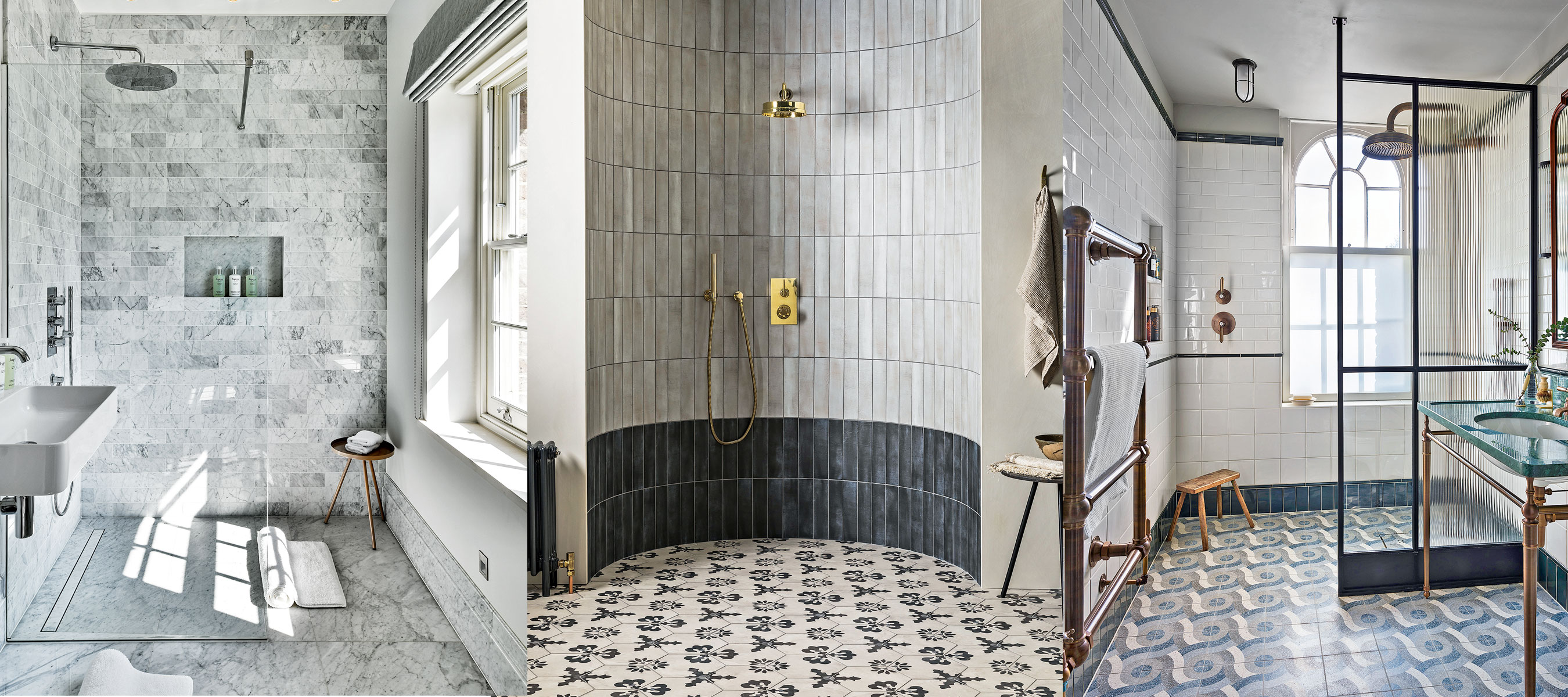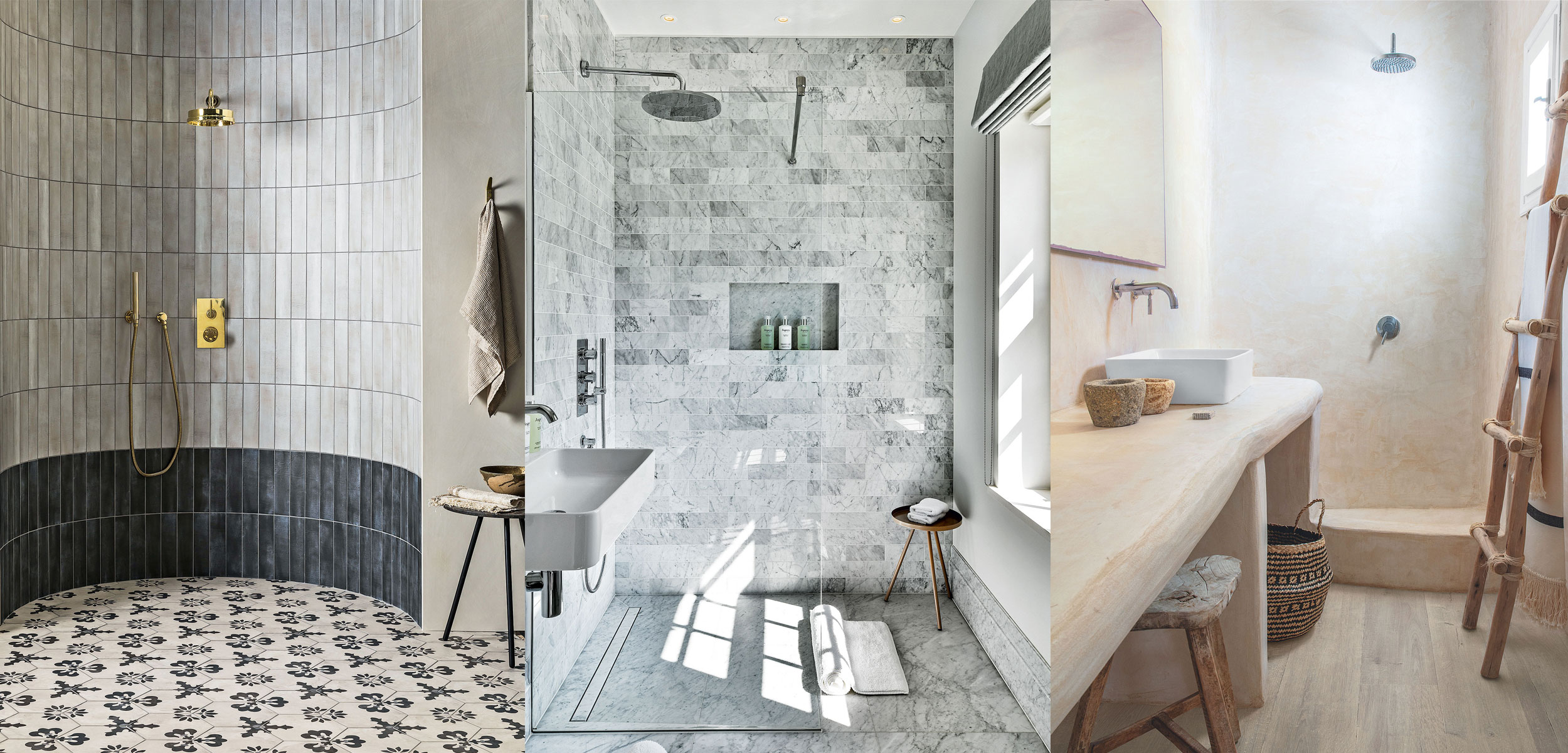Wet Wall Bathroom Design Concepts

A wet wall bathroom design is a modern approach that embraces a seamless and minimalist aesthetic. This design concept eliminates the traditional shower enclosure, creating a spacious and open feel. The entire bathroom floor, walls, and even the ceiling can be finished with waterproof materials, allowing water to flow freely without the need for a separate shower area.
Wet wall bathroom ideas – Wet wall bathrooms offer a unique and contemporary design solution, but it’s essential to consider the advantages and disadvantages before making a decision.
Advantages and Disadvantages of Wet Wall Bathrooms
The decision to opt for a wet wall bathroom design involves weighing the benefits against the potential drawbacks. Here’s a breakdown of the advantages and disadvantages:
- Advantages:
- Spacious and Open Feel: By eliminating the traditional shower enclosure, wet wall bathrooms create a sense of spaciousness and openness. This is especially beneficial in smaller bathrooms, where every inch counts.
- Modern and Sleek Aesthetic: Wet wall bathrooms offer a contemporary and minimalist design aesthetic. The seamless flow of water and the absence of bulky enclosures contribute to a sleek and sophisticated look.
- Easy Cleaning: Wet wall bathrooms are generally easier to clean than traditional bathrooms with separate shower areas. The absence of grout lines and corners reduces the buildup of dirt and grime.
- Increased Accessibility: Wet wall bathrooms can be particularly beneficial for individuals with mobility limitations, as they eliminate the need to step over a shower threshold.
- Disadvantages:
- Higher Cost: Wet wall bathrooms often require specialized materials and skilled labor, which can increase the overall construction cost.
- Waterproofing Challenges: Proper waterproofing is crucial for wet wall bathrooms. Any leaks or imperfections in the waterproofing can lead to significant damage.
- Limited Storage Options: The open design of wet wall bathrooms may limit the available storage space. Creative solutions, such as built-in shelves or niches, are essential for maximizing storage.
- Potential for Mold and Mildew: If proper ventilation is not provided, wet wall bathrooms can be susceptible to mold and mildew growth. Adequate ventilation is essential to prevent moisture buildup.
Wet Wall Bathroom Materials
The materials used for wet wall construction play a crucial role in the functionality and aesthetic appeal of the bathroom. Several materials are suitable for wet wall applications, each with its own unique properties and characteristics:
- Waterproof Tiles: Tiles are a popular choice for wet wall bathrooms, offering durability, water resistance, and a wide range of styles and colors. Porcelain and ceramic tiles are particularly well-suited for wet wall applications.
- Waterproof Concrete: Concrete is a durable and versatile material that can be used for wet wall construction. It offers a modern and industrial aesthetic and can be customized with various finishes.
- Waterproof Resin: Resin is a flexible and waterproof material that can be used to create seamless surfaces in wet wall bathrooms. It offers a wide range of colors and finishes, allowing for unique and creative designs.
- Waterproof Panels: Waterproof panels, such as those made from PVC or acrylic, are a cost-effective option for wet wall bathrooms. They are easy to install and maintain and come in various styles and textures.
Wet Wall Bathroom Layout
Designing a wet wall bathroom layout requires careful planning to maximize space and functionality. Here’s a layout concept that incorporates key features:
- Shower Area: The shower area should be designed with a gentle slope towards a central drain to ensure proper water drainage. A shower head with multiple spray settings can enhance the showering experience.
- Vanity: A vanity with a large countertop provides ample space for toiletries and grooming essentials. Consider a vanity with built-in storage or a separate storage cabinet to maximize space.
- Storage: Built-in shelves, niches, or a dedicated storage cabinet can be incorporated into the wet wall design to provide ample storage for towels, linens, and other bathroom necessities.
- Ventilation: Adequate ventilation is crucial to prevent moisture buildup and mold growth. Consider installing an exhaust fan or a window for proper air circulation.
Creating a Wet Wall Bathroom Oasis

Transforming your bathroom into a serene sanctuary starts with embracing the wet wall concept. This innovative design allows you to create a truly unique and functional space that feels like a luxurious spa retreat. Imagine stepping into a bathroom where every surface seamlessly blends together, creating a calming and inviting atmosphere.
Incorporating Natural Elements, Wet wall bathroom ideas
Bringing the outdoors in is a key aspect of creating a wet wall bathroom oasis. Natural elements like wood, stone, and plants create a sense of tranquility and harmony.
- Wood: Incorporate wood accents through floating shelves, vanity tops, or even a wooden ceiling to add warmth and texture to your wet wall bathroom. Choose wood species like teak or cedar known for their natural resistance to moisture.
- Stone: Stone tiles or slabs can be used for walls, floors, and countertops, bringing a sense of sophistication and natural beauty. Natural stone like marble, granite, or slate are excellent choices for wet wall bathrooms, as they are durable and water-resistant.
- Plants: Introduce greenery with plants that thrive in humid environments. Consider low-maintenance options like ferns, orchids, or peace lilies, which add a touch of life and freshness to the space.
Designing a Lighting Scheme
Lighting plays a crucial role in creating the desired ambiance and functionality in a wet wall bathroom. A well-designed lighting scheme enhances the beauty of your space and creates a relaxing atmosphere.
- Layered Lighting: Combine different types of lighting to create depth and dimension. Use recessed lighting for general illumination, pendant lights above the vanity for task lighting, and accent lights to highlight specific features like artwork or plants.
- Dimmable Lighting: Dimmable lights allow you to adjust the brightness level according to your mood and activity. This flexibility is especially important in a wet wall bathroom, where you might want a softer, more relaxing light for a bath or a brighter light for applying makeup.
- Warm Lighting: Warm white light bulbs create a welcoming and relaxing atmosphere, while cool white bulbs can feel more sterile and clinical. Opt for warm white bulbs to enhance the spa-like ambiance of your wet wall bathroom.
Selecting Color Palettes and Textures
Color and texture are essential elements in creating a calming and inviting atmosphere in your wet wall bathroom. The right combination can transform your space into a sanctuary.
- Neutral Colors: Neutral colors like white, gray, beige, and cream create a sense of peace and tranquility. These colors serve as a backdrop for other design elements and allow you to add pops of color through accessories or artwork.
- Earthy Tones: Earthy tones like browns, greens, and blues evoke a sense of nature and create a calming and grounding effect. Consider incorporating these colors through tiles, paint, or accessories.
- Textural Elements: Add texture to your wet wall bathroom through tiles with different finishes, natural stone with unique patterns, or even wood with a distressed look. Texture adds depth and interest to the space and creates a more inviting atmosphere.
Wet Wall Bathroom Maintenance and Care: Wet Wall Bathroom Ideas
:max_bytes(150000):strip_icc()/DesignedbyEmilyHendersonDesign_PhotobySaraTramp_57-e89ed1204c6b4153b0d782c056955956.jpg)
A wet wall bathroom, with its sleek, seamless design, is a luxurious addition to any home. But like any investment, it requires proper care to ensure its longevity and performance. Understanding the basics of wet wall maintenance will help you keep your bathroom looking its best and prevent potential issues down the line.
Cleaning and Sealing
Regular cleaning is crucial for maintaining a wet wall bathroom. The smooth, non-porous surface makes it easy to wipe away dirt and grime, preventing buildup that can lead to staining and damage.
- Daily Cleaning: After each use, simply wipe down the walls with a damp cloth or sponge. Use a mild, pH-neutral cleaner, avoiding harsh chemicals or abrasive cleaners that can scratch the surface.
- Weekly Cleaning: A more thorough cleaning with a specialized wet wall cleaner is recommended weekly. This helps remove any accumulated soap scum, mildew, or hard water stains.
- Sealing: While wet wall materials are designed to be water-resistant, regular sealing helps maintain their integrity and prevent water damage. Apply a sealant specifically designed for wet wall surfaces every 6-12 months, depending on usage and water exposure.
Impact of Different Water Sources
The type of water used in your bathroom can significantly affect the longevity of your wet wall. Hard water, with high mineral content, can leave behind deposits that dull the surface and potentially cause damage.
- Hard Water: Regularly clean your wet wall with a descaler designed for hard water to remove mineral deposits. Using a water softener for your entire plumbing system is a more permanent solution to prevent hard water damage.
- Chlorinated Water: Chlorine can cause discoloration and etching on wet wall surfaces. Consider installing a shower filter to remove chlorine from the water before it reaches your wet wall.
Troubleshooting Common Issues
While wet walls are designed for durability, some issues may arise over time. Understanding common problems and their solutions can help you address them effectively.
- Cracks or Chips: Minor cracks or chips can be repaired with a specialized wet wall repair kit. Larger cracks may require professional attention.
- Leaks: Leaks are a serious issue that can lead to water damage. Identify the source of the leak and repair it promptly. A professional plumber may be needed for more complex leaks.
- Mildew or Mold: Mildew and mold can grow in damp environments. Clean affected areas with a mildew-killing solution and ensure proper ventilation to prevent recurrence.
